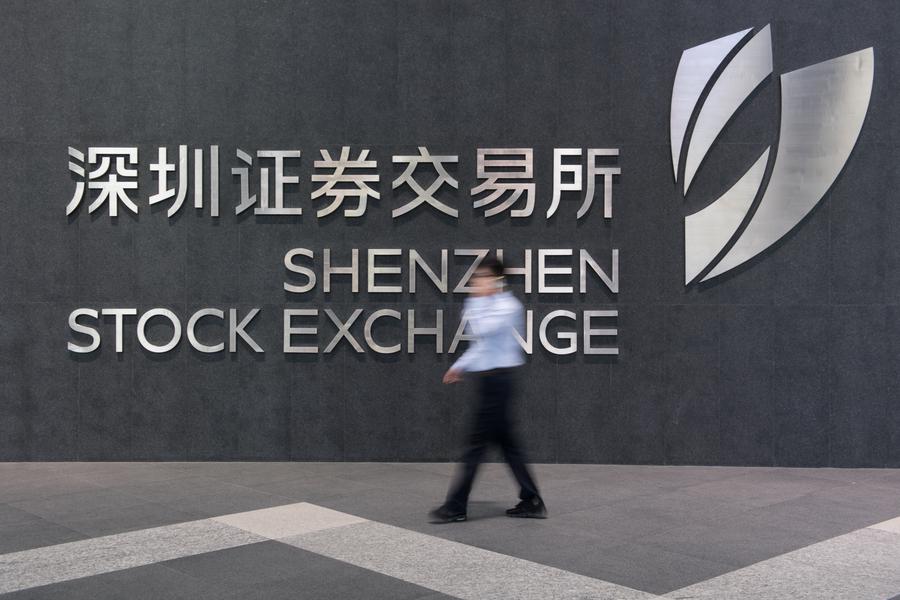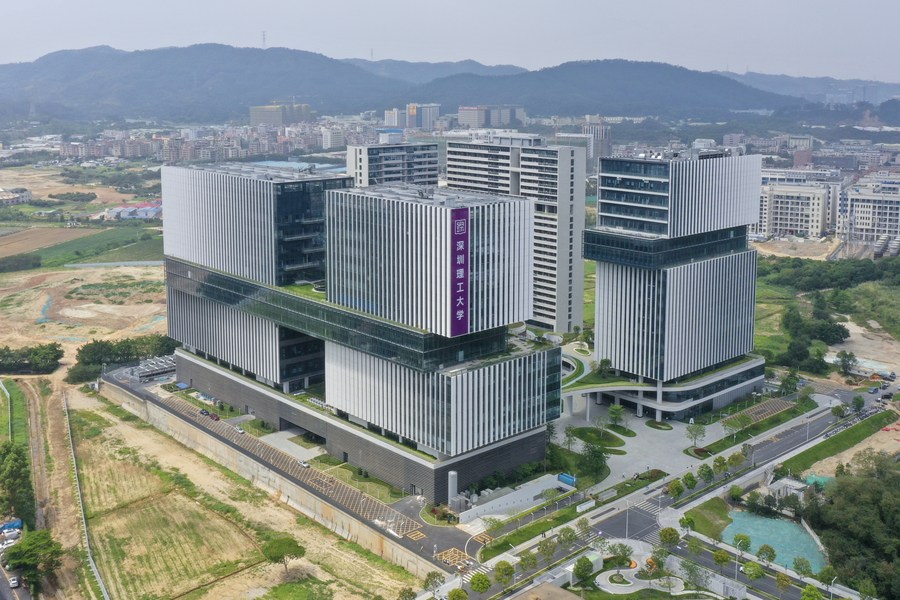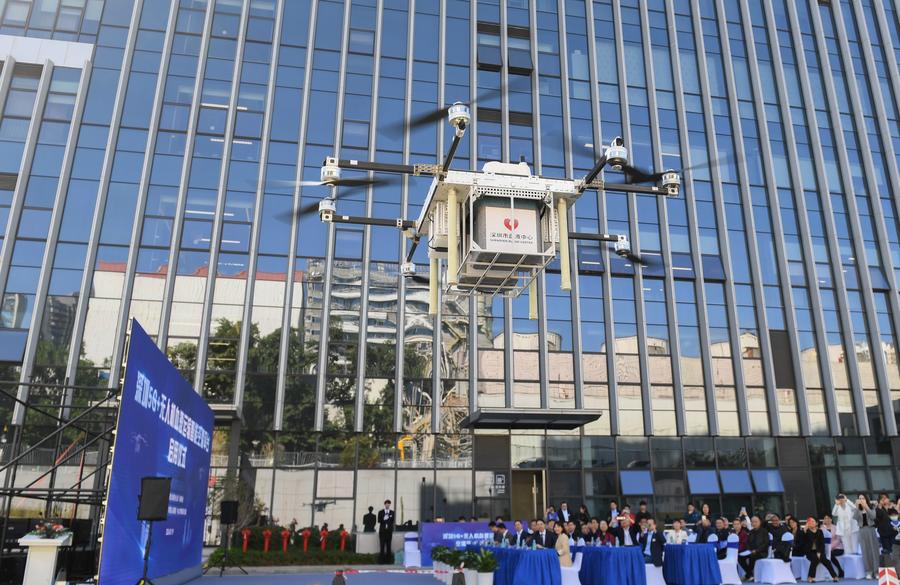The Shenzhen Experience: A Sequel to The Story of Spring

From almost nothing in the 1970s, Shenzhen today has emerged as a thriving trade and innovation hub, pioneering the country’s innovative development.
In the 1990s, one of the most popular songs in China was The story of spring, a tribute to the country’s reform and opening-up started in 1978 that ushered in a new “spring” of growth in China. One of the decisions taken at that time was to develop a county in southern China into a pilot for many of the reforms to be implemented. The county was the predecessor of today’s metropolis Shenzhen, a thriving industrial hub boasting many firsts.
Since 1978, the place has seen many initiatives. A major one launched in October 2020 aims to build Shenzhen into a pioneer demonstration zone for socialism with Chinese characteristics, giving the city more autonomy to reform key areas.
Efficient allocation of production factors
The efficiency in using land, a factor of production, is key to economic success. With rapidly restructuring industries, Shenzhen keeps improving comprehensive and flexible use of urban space.
In 2022, Shenzhen implemented a pilot program in Baolong Tech City, a robot manufacturing base. A plot of land for general industrial, commercial and transportation purposes was chosen for the program. While complying the rule which stipulates that no more than 30 percent of a land plot for industrial purpose can be used to build supporting facilities, the pilot program enabled the building of 35,000-square-meter supporting facilities for industries, including a neighborhood center, dormitories and a cafeteria.
To ensure smooth and orderly flow of labor, Shenzhen has carried out a series of reform. It piloted the reform of regulation on businesses and organizations adopting special working hours, and became the first city to put in place a system for qualification accreditation of those providing delivery services. The city also devised a mechanism for rapid mediation and settlement of disputes arising from flexible employment. The efforts provide better protection for workers in new employment forms.
Enabling capital to better serve the real economy is an important reason for the rapid development of Shenzhen’s economy. The Shenzhen Stock Exchange has piloted a registration-based IPO system of China’s Nasdaq-style board for growth enterprises. The stock exchange’s main board has resumed its IPO services after 21 years. In 2023, trading on the stock exchange ranked first in Asia, and third in the world. By the end of 2023, Shenzhen had nearly 2,000 venture capital institutions with a total of RMB 1.5 trillion funds managed, ranking third in the country.

Shenzhen has also accelerated adopting high technology. In November 2022, the Shenzhen Stock Exchange Technology and IP Exchange Center opened to explore market-based pricing and trading mechanisms for intellectual property and science and technology achievements. It aims to emerge as a national comprehensive service platform connecting the technology market and the capital market. Innovation was also made on the model of turning intellectual property into securities. From 2020 to 2023, Shenzhen issued 78 intellectual property-based security products valued at RMB 17.76 billion, transforming intellectual property into assets.
Data is a new factor of production, dubbed the “oil” of the digital economy era. To mine this “oil,” the Shenzhen Data Exchange was established in December 2021. In June this year, Digital China, a provider of integrated information technology services, incorporated financial cloud data products as data assets into its corporate financial statements. After being approved by the Shenzhen Data Exchange, Digital China was able to use the data to obtain a credit line of RMB 30 million from a bank.
A market-oriented business environment
The business environment is part of Shenzhen’s pull on investors. The city ranks first among large and medium-sized cities in China in the number of business entities. There is a surge of innovation and entrepreneurship, with millions of medium, small, and micro enterprises competing against each other, and thousands of special service providers and tech companies coming up.
As a reform, Shenzhen has allowed small and medium-sized enterprises to close temporarily in case of natural disasters, accidents, public health and social security emergencies, amid efforts to help them get through tough times.
In terms of market access, the National Development and Reform Commission and other authorities have introduced 24 special measures to relax restrictions on market access in Shenzhen. The city has been approved to expand the pilot program for opening up value-added telecommunications services to the outside world. Shenzhen treats domestic and foreign investors equally. It has eliminated the 50-percen limit on the proportion of foreign ownership in businesses dealing with Internet data, Internet access services, online data processing and transaction.
Shenzhen has filled a legal gap by enacting China’s first personal bankruptcy regulations in August 2020. It inaugurated China’s first bankruptcy management agency, and carried out the first domestic pre-bankruptcy counseling program for individuals. A bankruptcy protection service platform was also launched for test. In June 2023, the Shenzhen Bankruptcy Court served a civil ruling to Liang Wenjin, the debtor in China’s first personal bankruptcy case, calling him honest but unfortunate and exempting him from unpaid debts.
Innovating on court trial of cases involving intellectual property rights (IPRs), Shenzhen hired investigators with IPR expertise to ensure the accuracy of technical facts in a case. As a result, the average case handling time has been shortened by over 40 percent. Shenzhen also issued China’s first judicial guidance document on punitive compensation for IPR infringement amid efforts in creating the strictest system for IPR protection.

Enabling environment for research
Shenzhen has a dual-track scientific research investment mechanism that is both non-competitive and competitive, and has organized scientific research projects with different systems overseeing them for efficiency. In 2023, total investment in R&D in Shenzhen reached RMB 188.05 billion, an increase of 11.8 percent, accounting for 5.81 percent of the regional GDP. In this, R&D investment by businesses accounted for 94.9 percent of the total, ranking first in the country.
Shenzhen motivates researchers by giving them ownership or long-term use rights of their scientific and technological achievements. The aim of Shenzhen is to attract cutting-edge talent. The 2023 National Science and Technology Awards list has around 25 awardees and projects from scientific research institutions, universities, and high-tech enterprises in Shenzhen.
For overseas professionals, especially highly-skilled and urgently needed foreign talent, Shenzhen provides an R visa that generally comes with multiple entries. It has established an international professional qualification certificate recognition system so that international professional who have corresponding overseas professional qualifications or certification can work in China after their qualifications have been recognized by or registered with competent authorities.
A high-level open economic system
In 2021, Shenzhen was the first to be approved to carry out a pilot cash-pool service for multinational companies that integrates local and foreign currency management. The goal is to help enterprises reduce costs and increase efficiency by appropriately adjusting foreign debt quotas and implementing facilitation policies, such as local and foreign currency fund transfers. In 2023, Shenzhen was approved to carry out a pilot project for the centralized operation and management of cross-border funds in domestic and foreign currencies of multinational companies. The entry threshold was lowered and the scope of applicable enterprises was expanded to complement the 2021 pilot policy.
Chinese sportswear and athletic apparel maker Li Ning exemplifies the benefits of this pilot policy. The company is steadily expanding its presence in Hong Kong and overseas. With the policy, Hang Seng Bank helped Li Ning manage capital both at home and abroad in an integrated manner.
By the end of 2023, a total of 48 multinational companies in Shenzhen had participated in the pilot program. They included well-known companies in sectors, such as new-energy vehicles making, intelligent manufacturing and telecommunication solutions. Nearly US$ 140 billion were involved, which has cumulatively increased financial income and saved costs for enterprises by about RMB 100 million.

Improving medical services
In recent years, Shenzhen has been experimenting on relaxing restrictions on the access of new international drug to the Chinese market. A pilot program was launched in November 2020. Today, four medical institutions in Shenzhen have been implementing the program, and 39 types of imported drugs and equipment have been approved for market access.
To improve cross-border medical services, Shenzhen compiled and released international certification standards for hospital quality in 2022, which became the first hospital accreditation standard in the country to be authoritatively certified by the International Society for Quality in Health Care External Evaluation Association (ISQua EEA). Recently, the Shenzhen Hospital of Southern Medical University officially passed the international hospital accreditation certification, becoming one of the first three hospitals in the country to get the accreditation. During the evaluation process, the hospital resolved differences between the mainland and Hong Kong in terms of medical services and management, the coverage and reimbursement of basic medical care insurance and commercial insurance, and the management system for drugs and medical devices. In 2023, more than 20,000 Hong Kong, Macao and Taiwan residents and foreigners went to the Shenzhen Hospital for treatment.
Governance of the environment and urban space
In reforming the way of funding for projects mitigating climate change, Shenzhen has selected 196 projects since 2023. These projects are expected to reduce carbon dioxide emissions by approximately 5.91 million tons per year. Shenzhen has also devised the country’s first system for calculating Gross Ecosystem Product amount, turning invaluable ecosystem to calculatable assets.
The low-altitude economy, a new sector as a result of integrated development of strategically emerging industries, has multi-trillion-yuan market potential. Shenzhen has already boasted a complete industrial chain in this field covering electronic parts production and software platform development. The city innovated on its system for overseeing unmanned aerial vehicles (UAVs), allowing test flights of micro UAVs in some airspace. In 2023, the total output of Shenzhen’s low-altitude economy reached RMB 90 billion. Consumer UAVs produced in Shenzhen accounted for 70 percent of the global market and industrial UAVs for 50 percent.
Ji Xiaoli & Liu Bao are reporters with China Development and Reform News.
 Facebook
Facebook
 Twitter
Twitter
 Linkedin
Linkedin
 Google +
Google +










